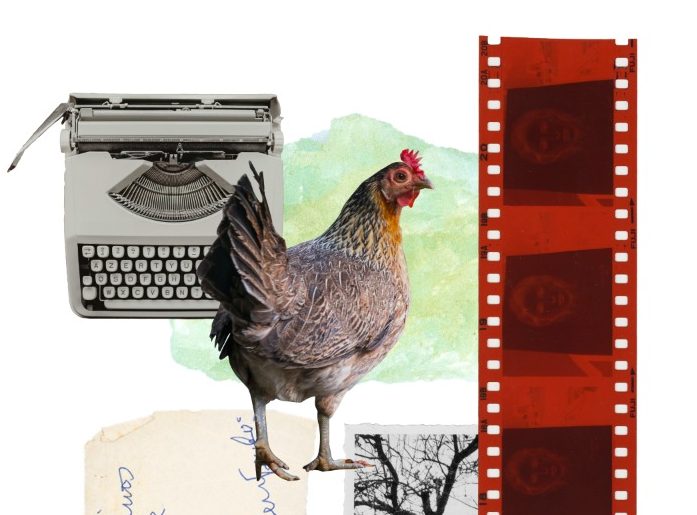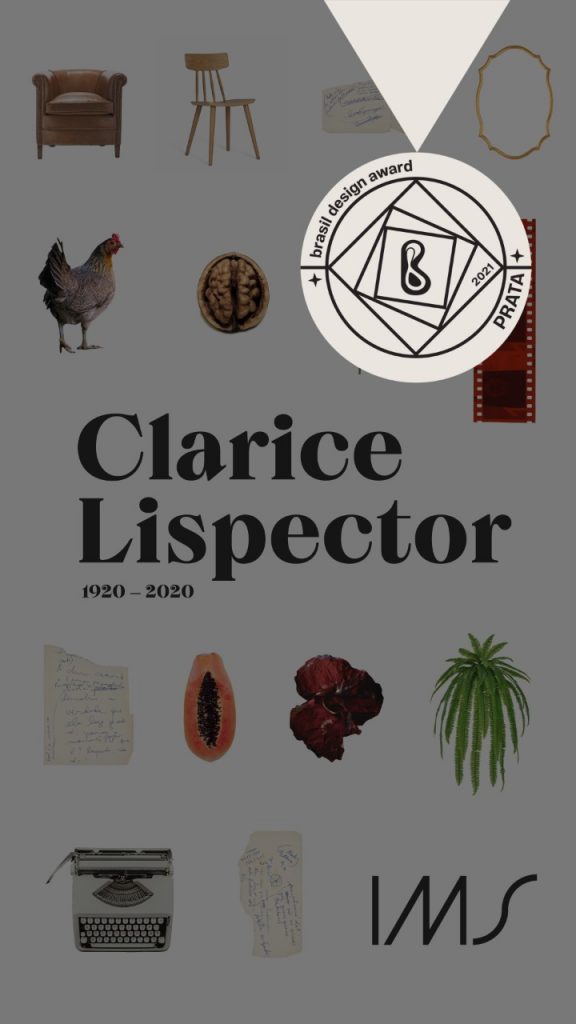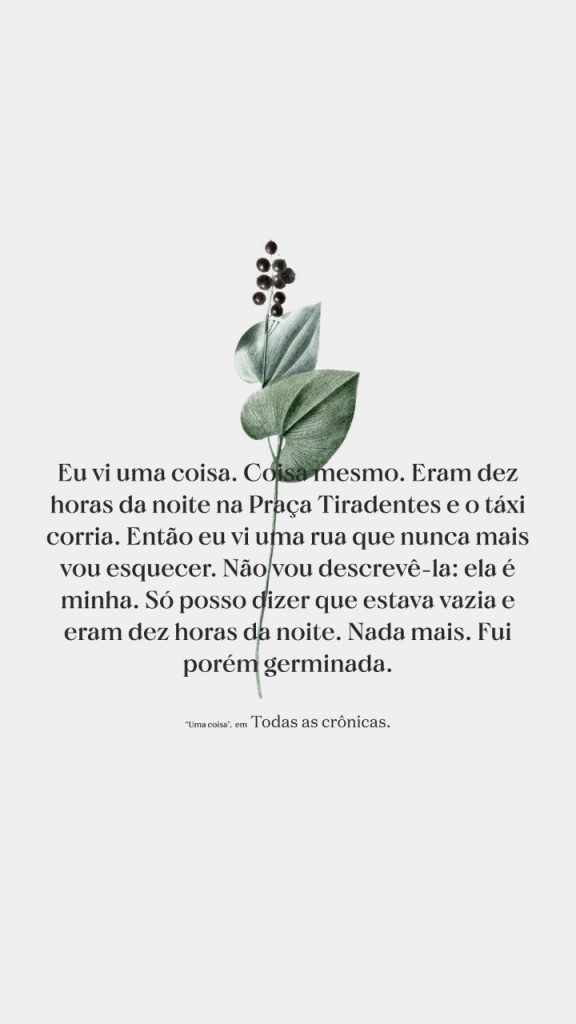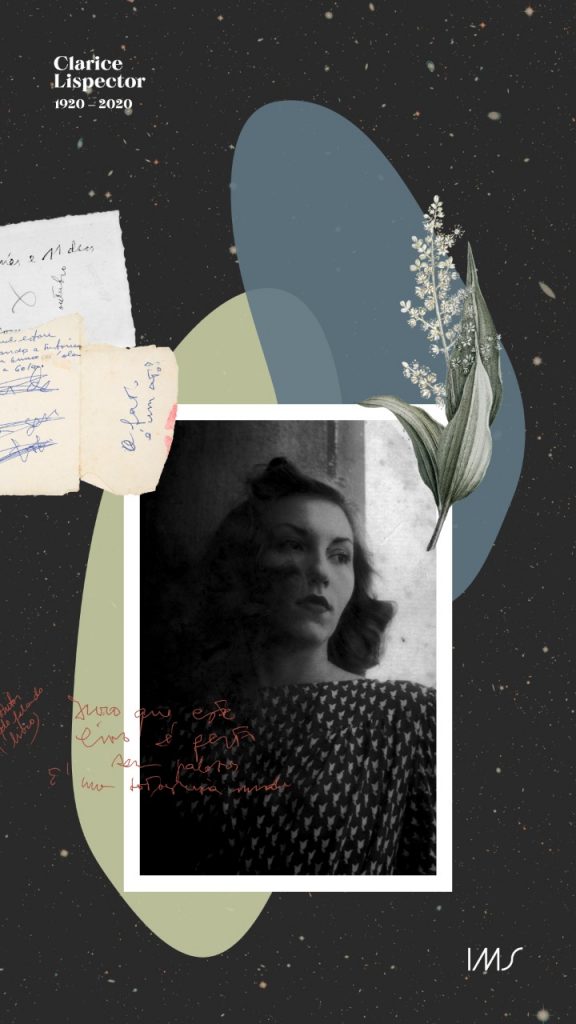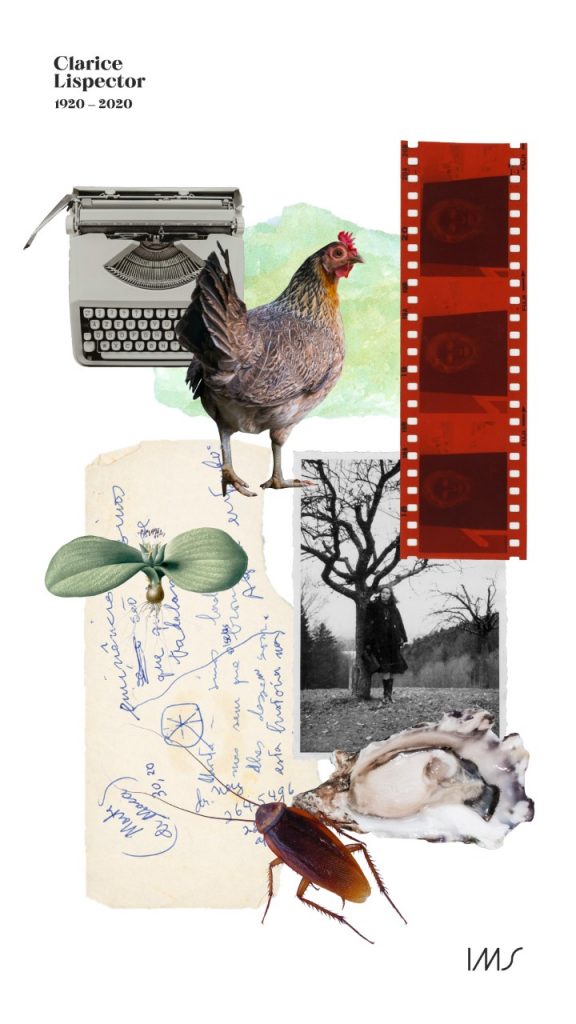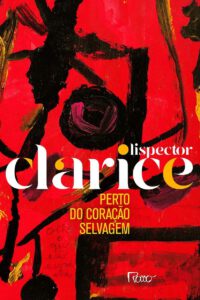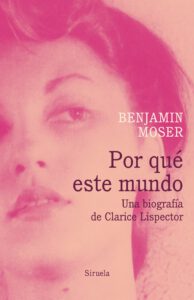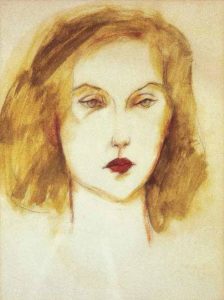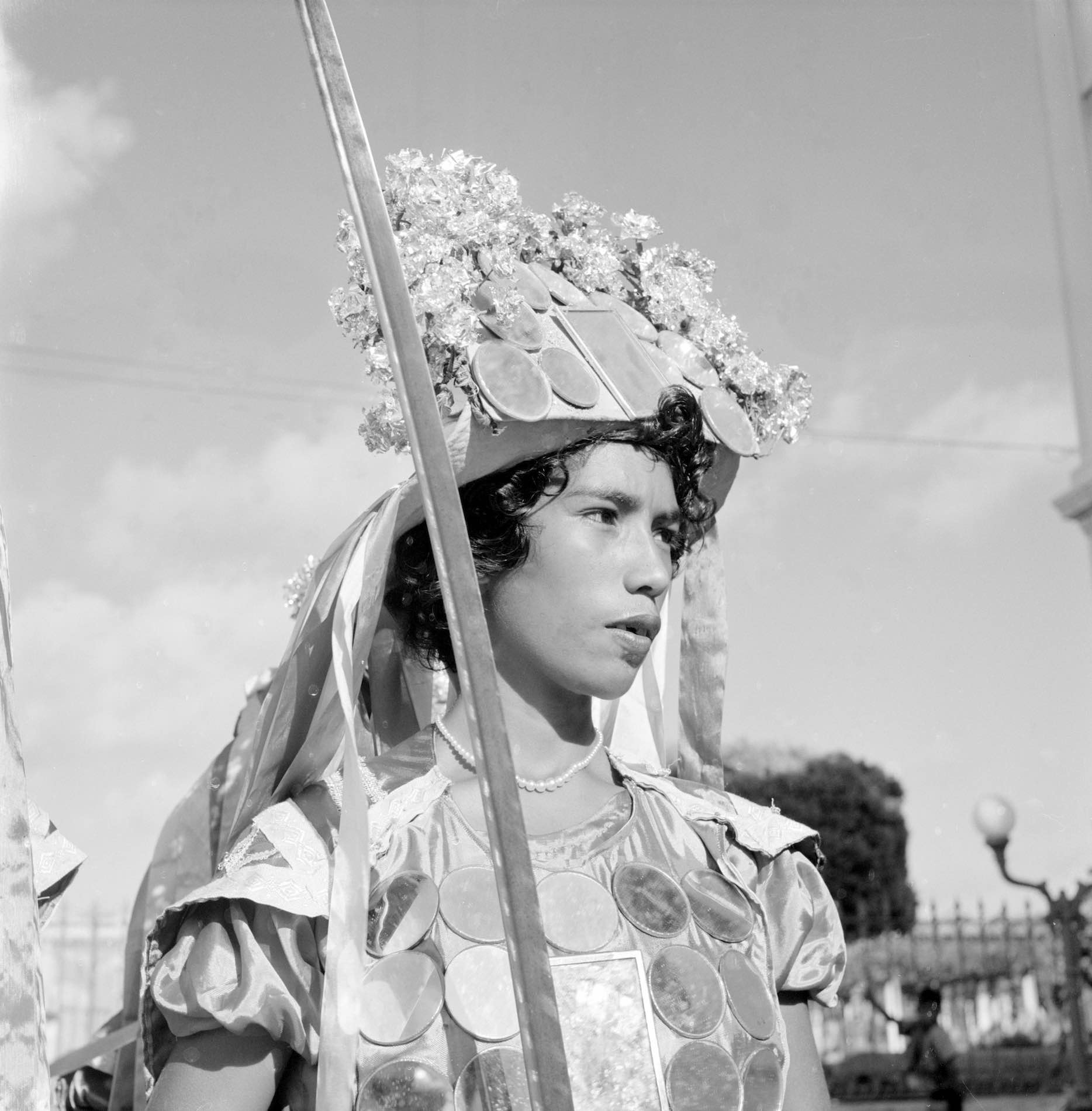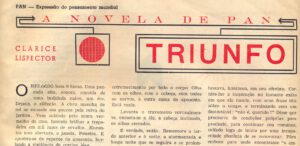Cunha Bezerra, Cicero. Idiocy and Holiness. IMS Clarice Lispector, 2022. Disponível em: https://site.claricelispector.ims.com.br/en/2022/01/12/idiocy-and-holiness/. Acesso em: 07 January 2026.
Michel de Certeau, in his La fable mystique, addresses an important aspect in the relation between idiocy and holiness in the first centuries, particularly in Christian literature, namely: a mode of isolation in the crowd. Idiocy, in the form of madness, is attributed to the crowd, and additionally, is established as a provocation, a transgression in the field of the “right-minded.” Idiots (saloi) are figures who affront social conventions and ecclesiastical precepts. Certeau encounters in the Lausiac History, by Palladius, a model for thinking about the narratives of nuns and monks, in monasteries and cities between the 4th and 6th centuries, as a showcase in which idiocy and holiness intersect in the form of examples in which perdition founds an in-between space where idiots (saloi), madmen (môroi), and saints challenge, in the form of spells and wonders, the status of language and wisdom.
Faced with a discourse that seeks to reestablish normal order through the negation of gestures, bodies, actions, laughs, which are considered as confrontations, deviations, and destructurations of normality, idiocy, confused with a simulation of madness, in the public sphere of the first centuries, was easily considered as an absence of rationality, and therefore required reclusion. It is in this sense that a statement such as “it is nothing, he’s an idiot” would represent, for Certeau, a frustrated attempt to reduce idiocy to the condition of silence, since, in the case of these women and men lost in their sacred deserts, their postures potentiated their strength and their lucidity packed by a spiritual cynicism that intervened in privileged places of meaning.
If Certeau encounters, in these narratives, the necessary images for one to think of an inversion of the classic dichotomies between wisdom and ignorance, madness and lucidity, profane and sacred, it is possible to say that the texts of Clarice Lispector, since her first novel, bear the decisive mark of a writing that, like Marguerite Duras, sought to elevate, in the words of Laurent Mauvignier (2012), “the disinherited, needy, and idiots to pure poetry.” Such that this article seeks to add to those that have already been published, which problematize the relation between madness and unreason in the context of modern literature, such as J.M. Wisnik (1988) and Yudith Rosenbaum (2019), not focusing on the common aspects that madness, in the wake of Foucaultian thinking, has assumed since Classical Antiquity, when it was considered as divine (mania), until its characterization as a mental illness, but daring to think of it, in connection with idiocy, as an expression of a deep spiritual sentiment that guides Lispector’s work in connection with the medieval Christian tradition.
To do so, I will dwell more specifically on The Hour of the Star, considering Macabea, a character “so ancient that she could be a biblical figure,” as the ultimate expression of a war led by a heroine, who like Judas Maccabeus (166-160 BC) fought to death on a battlefield for freedom. Before we focus on the novel The Hour of the Star, let us see how idiocy, associated with foolishness and madness, figures in some of the author’s novels.
In Near to the Wild Heart, Joana, a “naked name,” raves in her strange and crazy words that free her, even without understanding. An experience repeated with “eyes closed” and slight surrender. Joana, a figure with “poor, limited features,” had no beauty of her own and was inexperienced, untouched, a virgin, and naked as an animal. From life to the grave without receiving anything from anyone. Joana, a fool in the form of a “body living” in the face of events that, unlike facts, described as “the tear in the dress,” do not allow revolt but dissolution as a reunion that converges in the overcoming of self, death, the world, and God himself.
In The Apple in the Dark, Martin, after gazing at the “vast emptiness,” walks like a “contented idiot” who has learned the technique of falling into a “spiritual state” when he needed. An artifice that approximates idiocy and simulation. It is important to observe, once again referring to the story of the idiot narrated by Palladius, the play between real madness and its simulation. Salê, a character in the story, is described as perì tes hypoxrinoménes morían, that is, one who simulated madness. Of what does such a task consist? In “taking an animal-like attitude of purity” that reveals the very condition of the human being before a truth that bears the mark of irreducibility and madness in the face of the objectivity of facts. It is not by chance that in a dialogue with Vitoria, Martin understands, without understanding, why “only sainthood can save someone.” Sainthood, or holiness, as an impossible task that makes language a betrayal and a resistance in the face of the non-symbolizable thing.
In The Passion According to G.H., on the other hand, although idiocy does not figure explicitly, we cannot forget that the painful madness of laymen, in the form of an ordeal, is described as a temptation that is contrasted with humanization, that is, the will to empowerment and control of what, in the human, transcends its condition of humanity: life. Christ, “foolishness to those who are perishing,” as Paul of Tarsus says in 1 Cor. 1:18, is evoked in the novel as an example of a dangerous way of being that is the ultimate ordeal: “How can this man give us his flesh to eat?” (John 6:52).
Just like G.H., who in a sense ate herself in an orgiastic process of one who eats directly from the source, Christ exhorts one to chew him (trogô) and drink his blood (John 6:54). It is worth highlighting that, unlike the idiot (salê) who, in the narrative of Palladius, did not chew anything and confused herself with the very crumbs that composed her body,” G.H. participates in a process of dissolution that reveals the infinitude of the flesh (a vision of madmen) which, when divided, becomes humanized life. A “tame madness” or a healthy way of “belonging to a system” that is contrasted with the madness of being in the “thing itself.” A promising desert, a divine and infernal primary life in which human and inhuman, worldly and unworldly compose a great fabric marked by the grace of existence and by the impersonality of a God who is always current.
This theme remains in the novel An Apprenticeship or the Book of Pleasures, in which we see Lóri, who had the “idiocy of angels,” experiencing the blessing of having “madness without being crazy,” “a sweetness of stupidity” that clashes with the desire for understanding that, as such, is described as limited. Ulysses, who spent his life searching for the “intoxication of holiness,” encounters the holiness of the body, while Lóri, who struggled all her life against reverie, delves deeply into a glimmer-dream that makes her bite “the fruit of the world.” A divine power that humanizes, in its condition of non-human, what is human, that is, the affirmation and negation of the will. The im-possible experience of reducing the “I” takes place in the silence that follows the final colon in the novel.
Recovered in Água Viva, “the waiting colon” announces the impossible and intangible experience of death. It is in the life-death transit that madness “borders the cruellest good sense.” Compared with mathematical abstraction, the “madness of reason,” this one is distinguished, among other things, by being situated “beyond the freedom,” which is understood as a “void.” Madness is the creation, invention, and affirmation, through speech, of a salvation that is confused with perdition in the face of the certainty of the “illogicality of nature.” A divine madness? Creation as a transfiguration of self and of the world that pulsates in rhythm like a “crazy mystery.” “Luminous stupidity,” “dizzy” and free as a cat that has given birth, the protagonist of Água Viva is crazily immersed, from so much beauty, in her follies. A state of grace, not that of saints, but of whoever knows oneself existing in the world.
In A Breath of Life (Pulsations), both the Author and Angela express their literary-existential conditions, writers/characters, in the face of foolishness, stupidity, madness, and holiness. Angela attributes to her “essential stupidity” her escape from the objectification that sometimes affects her, describing herself as a “silly woman” who struggles against the “walls of existence.” The Author, on the other hand, who describes the book as “a bit crazy,” “a bit the fool,” says that he wants to live exclusively from his “foolish and fertile meditations” on death and God. In foolishness, therefore, we have a power that produces wisdom. It is interesting to observe the presence of Teresa of Ávila and Catherine of Genoa in Lispector’s writings. Women, sanctified by their illuminations, but who from the point of view of writing dared to describe their raptures in the form of perdition and idiocy. Teresa, in The Book of Her Life, when discussing the third degree of prayer, based on the metaphor of water and the garden, describes the joy of the soul precisely based on a “glorious foolishness” and a “heavenly madness” that is a source of “true wisdom.” Catherine, in turn, in her Treatise on Purgatory, profoundly explores the state of abandon of the soul, which is cited in the novel by Lispector, as a condition for the divine experience, as well as the annihilating and saving character of love. An ecstatic experience that, in the novel, and in the tradition of Neoplatonic mysticism, is described as “losing the illusory multiplicity of worldly things.”
There is certainly an aspect of madness that is not necessarily linked to holiness, but that expresses the very condition of existence of things and of the world. Madness as a fear in the face of death, as a temptation of being and power. Aspects that also assume, in several passages, the condition of refuge and denial of truth. Nonetheless, additionally, it is necessary to pay attention to the ambiguity that the theme carries and that allows for a consideration of madness, in association with idiocy, as an expression of the realization that living is “magical and wholly inexplicable.”
In The Hour of the Star, there is already a curious detail, for the theme considered here, in the “Dedication by the Author (actually Clarice Lispector).” In it, we have some references to musicians, enchanted beings such as gnomes, dwarfs, sylphs, and nymphs and also to themes that compose the narrative, as well as the “personality” of the Author, who is marked by timeliness, vibration, softening, astonishment, death, transfiguration, and finally, by doubt about destiny. However, it is to Schumann and “his sweet Clara” that the novel is dedicated. Hélène Cixous (2017) has already highlighted the “passage” from the “thing here” to the “I dedicate it” as an expression of the relation between the composition of the subject and the unsayability of gender. Beyond this possible reading, these allusions by Clarice, which go from the medieval to the contemporary, from the tonal to the atonal, reveal much about the composition of the novel as a distinct unity that is constructed without a central and unique chord.
Although described as an “exterior and explicit” narrative marked by a beginning, middle, and “grand finale” followed by silence, the text carries secrets of life in its most “primary” conception. It is blood that pulsates and that grants emptiness the value of fullness. Her character, a Northeastern girl who multiplies into thousands without faces and bodies, demands the right to scream as an image of multiple voices clamoring. Macabéa, a person who “scarcely has a body,” who is “a virgin and harmless,” wanders among bodies in a city “entirely against her.”
Macabéa, just like the idiot (salê) who tied a strip to her head as an identification of her idiocy, bears deep marks that range from habits to physical aspects such as her narrow yellow face, her curved shoulders, her stained body (“a cloth”) “full of holes”; nevertheless, no description comes closer than the fact that both idiots live “in an impersonal limbo.” In the Lausiac History, we read that the salê was content with crumbs, leftovers, and the water from the pots that she herself scoured. Without ever having shared her food with the other nuns (400 in all), despised by all and compared to a “monastery sponge,” both the salê and Macabéa are rejects defined by a way of being in the world marked by gratuity that points to a profound inner freedom.
Whether in the monastery experience or in the “unconquerable city,” idiocy figures, as Certeau observed, as “the leading astray provoked by the antiheroes” (Certeau, 1992, p. 47). Women and men who perform with their actions and bodies a work of seduction and displacement that makes these bodies endless exercises of their “appearance and disappearance” (Certeau, 1992, p. 46). Macabéa lives like a “stray dog” who wanders aimlessly, and her life is always already. Living as an ordeal in which suffering and martyrdom are confused with a destiny that is not given but cut into playing cards.
Finally, Macabea, living incompetently, believing idiotically, had an advantage over the poor: she had the privilege of not begging. When she was hungry, she would “chew paper into a pulp and swallow.” Completely surrendered to becoming, she had no time to complain. Totally regretful of everything, she did not need God, although she prayed, but as one who prayed for nothing. Living matter, primary, organic form, she simply existed. Lost in the crowd, amidst unexpected ecstasy, she recognized herself as impossible. An ephemeris that is confused with dissimulation. Once again, like the salê, Macabéa establishes an unknown: “are you just pretending to be an idiot or are you actually an idiot?” The answer comes from the narrator: “She wasn’t an idiot but she had the pure happiness of idiots.” Empty, void, nothing, she experiences four ecstasies that reveal, without her knowing or through not knowing, the “void that fills the souls of the saints.” In a typed rhythm of one who meditates without realizing it, Macabéa’s life follows the impacts/events that fix impressions, memories, experiences marked by the ink of an irreducible becoming on the ribbon of a machine/world: “all I know how to do is be impossible.” Holy innocence! A freedom that is very close to what, in the words of Marguerite Porete, when describing the state of annihilation of the soul, is only comparable to the life of a child (PORETE, 2005, p. 81).
If through Marguerite’s mirror (speculum) we have an image that reflects the play between literature and mystagogy, which is understood as an initiation into mysteries that leads to the abyss of a spiritual life marked by a silent “bottomlessness” in which all opposites converge, the mirror, in The Hour of the Star, assumes, in its ordinarity, the role of reflecting the life of a Northeastern girl who, due to shame, has never seen herself naked, but who is totally explicit.
A significant image, in the narrative, that separates the description of Macabéa’s former life, made by Rodrigo S.M., from the reflection of a physical existence marked by disfiguration that establishes a play between what is displayed (visible) and what is not figurable (invisible). The delicate thing that demands, from the narrator, abstention, solitude, and simplicity as conditions for a description of a self-impregnated body/soul. A growth without fertilization (parthenogenesis) that, just like how it is born, dies embracing its body in a fetal position. It is in her own heart that Macabéa finds the breath of life and that even in the face of death she insists: “I am, I am, I am.”
* Photography: Marcel Gautherot. Reisado (Festa Popular), circa 1943. Marcel Gautherot Collection/ Instituto Moreira Salles
** Translated from the Portuguese by Marco Alexandre de Oliveira.
*** Cicero Cunha Bezerra is a full Professor of the Departament of Philosophy at the Federal University of Sergipe. CNPq researcher.
References
CIXOUS, H. Extrema fidelidade. In: LISPECTOR, C. A hora da estrela, Rio de Janeiro: Rocco, 2017, p. 131-163.
CERTEAU, M. A fábula mística, séculos XVI e XVII. Trad. Abner Chiquieri, Rio de Janeiro: Forence, 2015.
PALLADIO, La storia lausiaca. Introduzione di Christine Mohrmann, testo critico e commento a cura di G.J.M. Bartelink. Traduzione di Marino Barchiesi, Firenze: Fondazione Lorenzo Valla, 1974.
PORETE, M. El espejo de las almas simples. Edición y traducción de Blanca Garí, Barcelona: Siruela, 2005.
ROSENBAUM, Y. (2019). A escrita (do) impossível em A hora da Estrela. FronteiraZ. Revista Do Programa De Estudos Pós-Graduados Em Literatura E Crítica Literária, (23), 24–41.
WISNIK, JM. Iluminações profanas (poetas, profetas e drogados). In: https://artepensamento.ims.com.br/item/iluminacoes-profanaspoetas-profetas-e-drogados/

